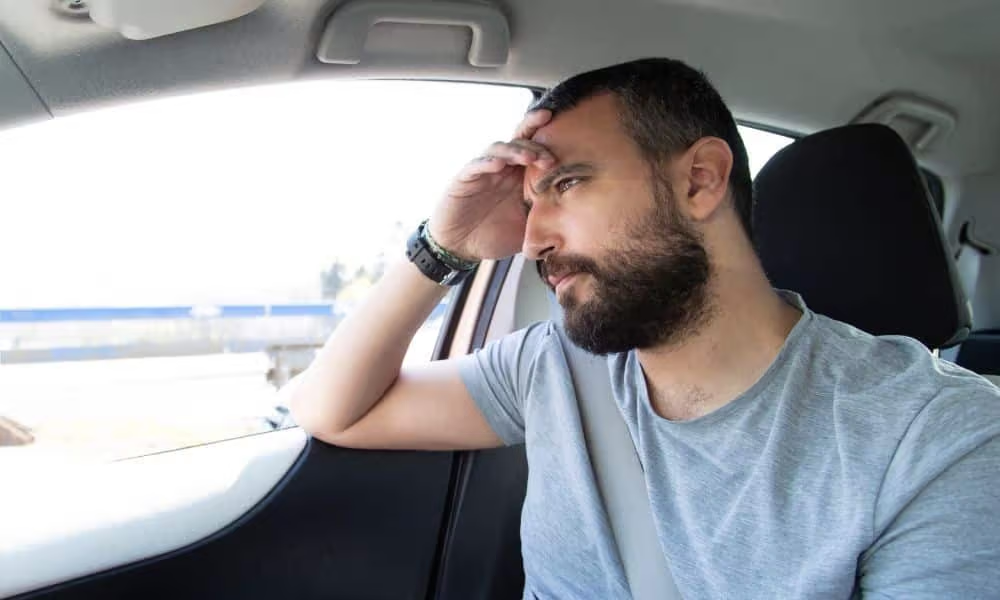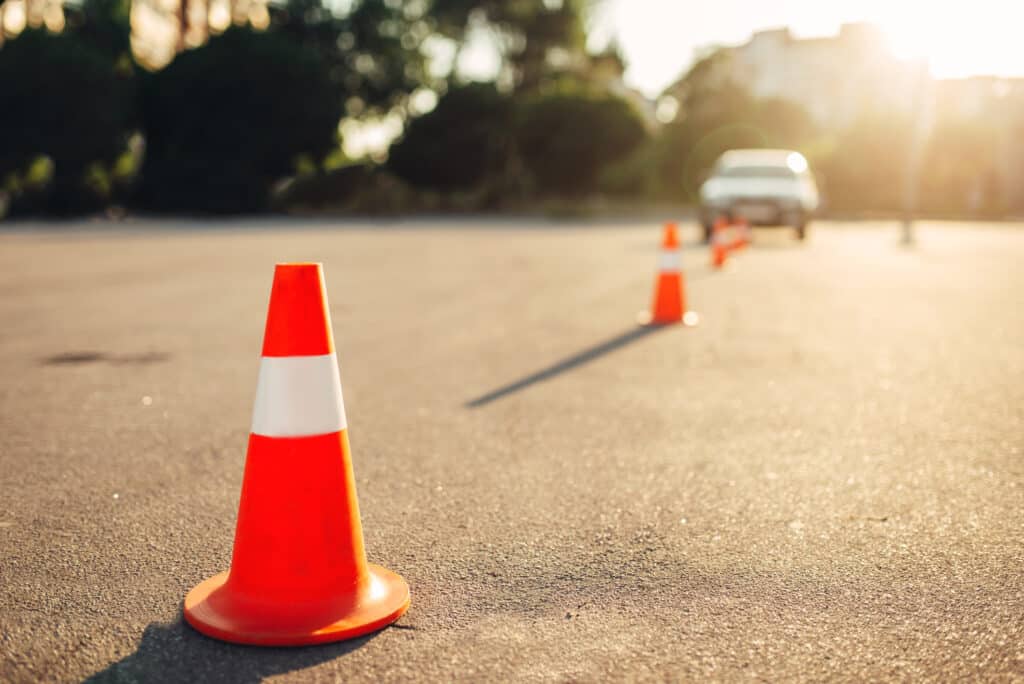It can be daunting to get back behind the wheel after you have been in a car accident. You may struggle with your confidence or second-guess your competence (or that of other drivers).
It’s normal to experience these feelings after an accident. After all, it’s likely the accident was a traumatic life event. These feelings may pass on their own, but what happens if you are unable to shake them and they start to develop into something more serious?
Fear of Driving
When you think of phobias, you might think of fear of heights, fear of dying, or the fear of public speaking. You probably don’t immediately think about the fear of driving – yet this is actually the fifth most common phobia.
Vehophobia is the term for the intense or excessive fear of driving (note, fear of being a car passenger is called amaxophobia). Sufferers of vehophobia often take disproportionate or irrational measures to avoid driving and will experience extreme anxiety in situations where they do end up having to drive.
Factors that can contribute to someone developing vehophobia may include a family history of anxiety, being a witness to an accident, having near misses on the road, being in unfamiliar driving situations (such as driving in extreme weather), or being in an accident.
In fact, almost one-third of people who have been in a road accident suffer from one or a combination of psychological conditions as a result, such as:
- Adjustment disorder
- Acute stress disorder
- Post-traumatic stress disorder (PTSD)
- Phobia, such as vehophobia
While these conditions are often triggered by an accident, sufferers of vehophobia can find themselves experiencing anxiety in safe environments – even with just the thought of driving.
Symptoms of Vehophobia

Like all types of phobias, vehophobia can manifest itself with both physical and mental symptoms, which can significantly impact day-to-day life. Even the smallest trigger can cause an immediate flashback to the event and the trauma of the accident. Symptoms in these episodes can include various physical or mental symptoms such as:
- Increased heart rate
- Short, shallow breathing
- Panic attacks
- Chest pain
- Intense sweating or feeling cold
- Shaking or trembling
- Dry mouth
- Muscle tension
- Difficulty controlling worrying feelings
- Ruminating over bad thoughts
- Fatigue or difficulty sleeping
- Brain fog
These symptoms can be so powerful that the person experiencing them may be unable to get back into the car. As a result, sufferers may miss school or work because they are unable to drive there (particularly in places without public transport links).
It can also become difficult to maintain social relationships, complete daily tasks like grocery shopping, or attend medical appointments. The impacts of vehophobia on a person’s life can be completely debilitating.
Four Steps to Getting Back on the Road

After an accident, we tend to prioritise fixing the damage that we can see. Recovering from physical injuries and sorting out insurance or compensation are generally at the top of our ‘to do’ list. However, amongst the chaos of paperwork, phone calls, and appointments, your mental health could be suffering. By the time you’re physically ready to get back on the road, you might find that you simply can’t.
Fortunately, whether you’re struggling with your confidence or other more serious psychological effects after an accident, there are four steps you can take to get yourself back on the road:
1. Give Yourself Time
Shock is common immediately after an accident. This can feel both physical (cardiovascular response such as fast-bearing heart) and psychological (unwanted thoughts or dreams about the crash, irritability, worry, and avoidant behaviours).
These are normal responses to a traumatic event and can last from a few hours to a few days. It is important to give yourself time to process what has happened, and to not rush back into anything if you are not ready. If you push yourself too early, your symptoms may get worse and start to affect everything else in your life. If this happens, you should consider seeking help.
2. Reach Out for Mental Health Treatment
If you are experiencing vehophobia or the psychological effects from an accident, it could be helpful to talk about it. A good place to start is by talking to your GP who can develop a mental health plan with you.
These plans outline how you are feeling, objectives for recovery, and the most suitable treatments. Your doctor may refer you to a mental health professional such as a psychologist, counsellor, or psychiatrist (you may be eligible for a rebate for these sessions as part of your mental health plan).
There are two common therapies mental health professionals use to treat issues after an accident:
- Cognitive Behavioural Therapy (CBT): CBT aims to help a person change unhelpful or unhealthy patterns of thinking, feelings, and behaviour. CBT helps to make thoughts about the event more manageable using strategies to manage and overcome the trauma and anxiety.
- Prolonged Exposure Therapy (PE): PE is a form of CBT that therapists use to help patients gradually approach trauma-related cues. For example, triggers caused by thinking about driving or getting back behind the wheel.
3. Embrace the ‘Normal’ Everyday
A traumatic event can change how we interact with the world, affecting our confidence and how we view ourselves. Feelings of shame, guilt, and paranoia after an accident are commonplace, and can feed into our everyday lives. Ultimately, this can affect our relationships and other daily interactions, leading to reclusive or avoidant behaviour.
Even if you are not ready to get back onto the road, it’s important to try to keep your everyday life as ‘normal’ as possible. Continuing to go to work (if your circumstances allow), socialising, and spending time with people who understand your situation can help with your recovery. Positive experiences after an accident can help keep your emotional wellbeing on track.
4. Regain Control With A Defensive Driving Course

Fear of driving after an accident can feel like a loss of control – over your surroundings or what is going to happen to you on the road.
A good way to regain a sense of control is to enrol in a defensive driving course once you feel ready to drive again. A defensive driving course won’t change how other motorists drive, but it can help you to learn about ways to anticipate events and avoid dangerous situations on the road.
Look for courses that have been developed with input from road safety experts and deal with topics such as:
- Risk avoidance strategies
- Situational awareness
- Hazard perception
Returning to Driving Is Possible After an Accident
Everyone recovers differently from an accident (both physically and mentally), and progress is not always linear. You may sometimes feel like you’re taking one step forward and two steps back – and you may find yourself getting frustrated as a result.
But remember, you are not alone. There are resources and help available, and it is possible to drive without fear again after an accident. Give yourself the time to recover, and seek mental health support if you need it. Surrounding yourself with normalcy and taking a defensive driving course can also help you get your driving mojo back.
